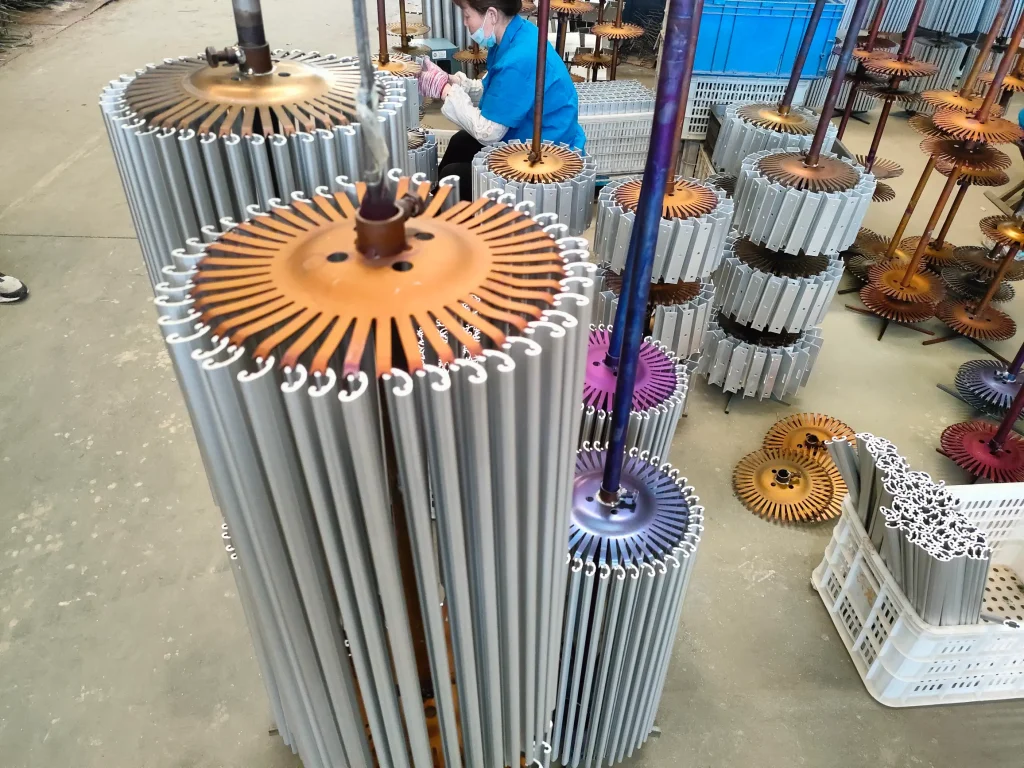Aluminum Protective Coating Guide | Reliable Surface Protection Solutions for Corrosion Resistance
Aluminum is widely used across industries for its strength-to-weight ratio, durability, and machinability. However, it is susceptible to corrosion, especially in environments with moisture, salt spray, or industrial chemicals. Applying the right aluminium protective coating is crucial for ensuring long-term performance and extending product life, as outlined in this Aluminum Protective Coating Guide.
This Aluminium Protective Coating Guide is designed for procurement professionals, process engineers, traders, and business owners looking for effective ways to protect aluminum surfaces from corrosion. Whether you’re sourcing components, overseeing manufacturing, or maintaining product performance, this guide provides practical steps to help you choose the best aluminium corrosion protection solution.
Step-by-Step Guide to Aluminum Surface Protection
Step 1 – Define Protection Goals and Environmental Exposure
Key Questions to Consider:
- Is the aluminum part used indoors or outdoors?
- Will it be exposed to salt spray, humidity, or chemical agents?
- Is a decorative finish or electrical insulation required?
Understanding the use-case and exposure environment determines the type and strength of aluminum protective coating needed.
Notes:
- Marine environments require high-grade anti-corrosion finishes.
- Industrial applications may benefit from powder coating or anodizing.
- For structural or functional parts, prioritize abrasion resistance and durability.
Related: What is the best protective coating for aluminum?
Step 2 – Choose the Right Coating Technology
Several coating technologies are available for aluminum, each with its specific strengths and application scenarios.
Common Aluminum Coating Options
| Coating Type | Advantages | Common Applications |
|---|---|---|
| Anodizing | Improves corrosion resistance and hardness | Aerospace, electronics, casings |
| Powder Coating | UV resistant, colorful, thick coating | Architecture, vehicles, signage |
| Electrophoretic Coating (E-coating) | Even coverage, high chemical resistance | Auto parts, lighting systems |
| Aluminum Anti-Corrosion Spray | Easy to apply, ideal for spot treatment | Maintenance, DIY repair, quick fixes |
Expert Tip:
- For small-volume custom parts, use aluminum anti corrosion spray.
- For mass production, consider anodizing + sealing.
- For complex geometries or weld areas, touch-up sprays are ideal.
Related: How to protect an aluminium surface?
Step 3 – Surface Pre-Treatment is Critical
Our Aluminium Protective Coating Guide stresses: Ensure surfaces are clean, dry, and adhesion-ready before coating application – critical for maximum coating durability.
Recommended Pre-Treatment Workflow:
- Degreasing – Use alkaline solution or ultrasonic cleaning to remove oils.
- Mechanical Abrasion (sanding or blasting) – Improve surface roughness.
- Chemical Conversion (e.g., chromating or phosphating) – Stabilizes the base metal.
- Drying – Eliminate moisture before coating application.
Key Considerations:
- A poorly prepped surface = weak protection.
- Dust-free environments are ideal for consistent results.
Step 4 – Apply Coating and Cure Properly
Depending on the chosen coating, follow proper application and curing procedures.
Coating Process Overview
| Coating Method | Application Process | Curing Requirements |
|---|---|---|
| Anodizing | Electrochemical bath, voltage control | No curing, requires sealing |
| Powder Coating | Electrostatic spray + oven | 180–200°C for 10–20 minutes |
| E-Coating | Immersion + electric current | Rinse + oven bake |
| Spray Coating | Manual or automatic spray | Air dry or low-temp baking |
Attention:
- Always follow material data sheets (MDS) for curing time and temperature.
- Improper curing leads to flaking, discoloration, or poor adhesion.
Related: What type of protective finish is applied to aluminum?
Step 5 – Inspection and Long-Term Maintenance
You must inspect a good coating after application and maintain it regularly to ensure its effectiveness over time.
What to Check:
- Surface finish: uniformity, gloss, color consistency
- Adhesion: use crosshatch tape test or pull-off methods
- Corrosion resistance: perform salt spray (NSS) test for 48–240 hours
Maintenance Tips:
- For minor wear or scratches, reapply aluminum anti corrosion spray.
- Regularly clean with neutral pH cleaners.
- Avoid exposing coated parts to abrasive tools or harsh chemicals.
Frequently Asked Questions (FAQs)
| Question | Answer |
|---|---|
| Why is my aluminum coating peeling off? | Likely due to improper surface prep or under-curing. Ensure thorough degreasing and correct curing temperature. |
| Can I use anti-corrosion spray as a final finish? | For light-duty or indoor use, yes. For outdoor or marine use, additional protection is recommended. |
| What is the protective layer of aluminum? | Anodized aluminum forms a controlled oxide layer that resists corrosion naturally. |
| Is anodizing better than spray coatings? | Anodizing offers deeper surface integration and wear resistance but is more complex and expensive. |
Further reading:
Partner with Welleshaft for Expert Aluminum Protection Solutions
At Welleshaft, we provide end-to-end aluminum surface protection services, including:
- Precision machining + surface coating
- Anodizing, powder coating, electrophoresis
- Small batch prototyping + large-scale production
- Custom consultations for corrosion resistance optimization
Whether you source OEM parts or maintain high-value assets, Welleshaft builds your aluminum components to last.
Contact us today for technical consultation and project quotes!

